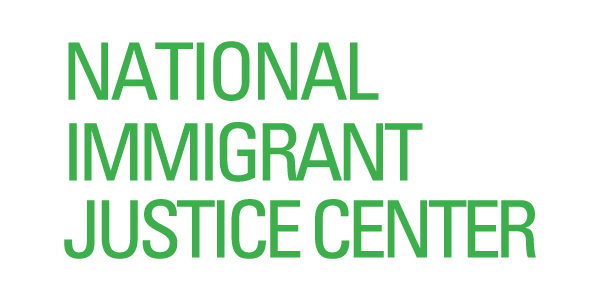Last week, 35 members of Congress sent a letter to the Secretary of the Department of Homeland Security (DHS) calling for sharp limits on the use of detention of LGBTQ immigrants due to their vulnerability to sexual assault. And today, DHS’s Immigration and Customs Enforcement (ICE) has issued guidance on the detention of transgender non-citizens.
The National Immigrant Justice Center (NIJC), National Center for Transgender Equality, United We Dream, Immigration Equality, and Human Rights Campaign welcome these long-overdue developments but insist that ICE can and must do more to protect LGBTQ immigrants. The core question here is why so many vulnerable people are imprisoned by ICE in the first place to await immigration court hearings. Earlier this week, the Secretary of DHS stated that the detention of women and children who are seeking asylum was an inappropriate use of agency resources; for LGBTQ individuals, the same logic applies. This community is at the highest risk of rape and assault, and for most there is no compelling reason to justify their detention. Indeed, a recent report from the Center for American Progress shows that ICE routinely detains LGBTQ immigrants who it knows are at great risk and should not be behind bars.
From NIJC’s perspective, the changes to detention procedures announced by ICE today are a long-overdue welcome recognition of the incredible vulnerability of LGBTQ immigrants, but are far from adequate to protect them. For example:
- LGBTQ asylum seekers remain at risk: ICE’s new guidance focuses on transgender immigrants, who face a one in three chance of sexual assault within 12 months of incarceration, according federal surveys. Yet, the need for protection of lesbian, gay, and bisexual immigrants—who also are frequently asylum-seekers fleeing rape and torture and also face shockingly high levels of abuse in detention centers—is not addressed.
- Continued use of solitary confinement: The guidance instructs detention facilities to more consistently identify transgender people, calls for more staff training, and allows for the possibility that some transgender women will be housed alongside other women instead of with men. But, the guidance permits the use of segregated units akin to solitary confinement as part of the screening process.
- Lack of adequate implementation policies: The policy requires detention facilities to refer to transgender individuals using their preferred pronouns, instructs officials to inquire about preferred first names, and includes guidance on who may conduct a pat down or strip search. This guidance is significant in that it begins to afford transgender individuals the basic dignity to which they are entitled, but it does not provide sufficient detail about the steps that DHS will take to address and prevent the very real risk of sexual abuse that transgender individuals will still face in detention.
“After years of raising concerns about the treatment of LGBT immigrants, especially transgender women, we are happy to see ICE take this step,” says Keren Zwick, managing attorney for NIJC’s LGBT Immigrant Rights Initiative. “But as with any ICE initiative, the devil is in the details. We continue to have significant concern that the implementation of this guidance will be slow, insufficient, and that it will result in hubbing transgender women in remote areas where they cannot have meaningful access to counsel,” Zwick adds.
Given these concerns, NIJC is working together with immigrant and LGBTQ communities nationwide, to continue pressing DHS and ICE to move away from the needless, costly, and dangerous policy of mass detention.
With offices in Chicago, Indiana, and Washington, D.C., Heartland Alliance's National Immigrant Justice Center is a nongovernmental organization dedicated to ensuring human rights protections and access to justice for all immigrants, refugees, and asylum seekers through a unique combination of direct services, policy reform, impact litigation and public education.

